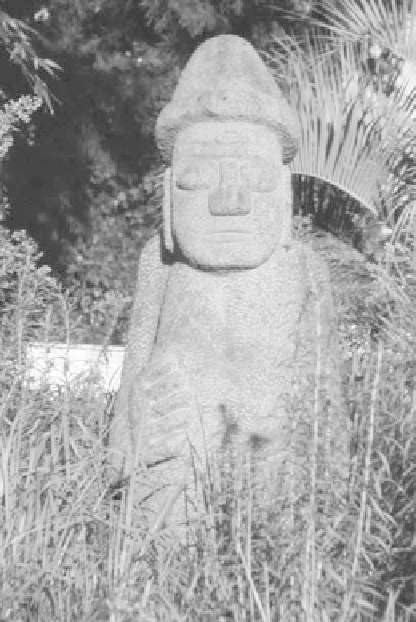Geography Reference
In-Depth Information
increased life expectancy . Rural-urban migration depleted
the countryside and provoked a major urban housing cri-
sis. Millions of apartment units (flats) have been con-
structed to house this 82 percent urban society .
Songdo City is a new development under construc-
tion on reclaimed land near the port of Incheon on the
Y ellow Sea. Songdo will be a free economic zone with
80,000 apartments (already rented or sold out), schools,
hospitals, extensive office and retail space, and under-
ground train links to Seoul. Plans call for 40 percent of
the city to be “green.” Computers will be built into every
building, office, and street as part of a ubiquitous net-
work linking every person and place. Urban theorist
Mike Davis calls Songdo City a spectacular example of
“imagineered urbanism,” When completed in 2015, it
will be the gateway to Northeast Asia. Songdo City is Ko-
rea' is answer to Shanghai and Dubai. It is billed as the
largest real estate development in history .
Urbanization and apartment living have altered Ko-
rean traditional family structure. Most Koreans now live
in nuclear family settings rather than in extended family
systems. However, Confucian values prevail. Although
women now have more control over their lives, they are
far from equal to men in decision making and economic
opportunity . Women are found mostly in service or
“nimble-finger” jobs. Corporations are overwhelmingly
male enterprises at management levels.
T Two-thirds of South Koreans live in cities of 50,000
or more with 47 percent living in and around Seoul.
Greater Seoul has sprawled eastward and southward with
an agglomeration of new satellite cities (Figure 13-8).
Formerly focused on a single central business district
(CBD) dating from Japanese times, Seoul has evolved
from a monocentric to a multicentric city . Occupation
rates are well over 100 percent, reaching even 600 percent
in older, more densely populated areas! This means that
most flats house two families—one owner and one renter.
Much of downtown Seoul is underground. Miles of
shopping arcades lie under the streets. All are connected
to a network of subway lines and linked to major depart-
ment stores and hotels above ground.
Another modern development is the rejuvenation of
the Han River. Formerly a trash-filled, dry ditch in sum-
mer, its water level is now kept constant by a series of
dams. The river is criss-crossed by bridges and lined with
parks and high-rise housing developments (Figure 13-9).
Whereas 80 percent of raw sewage used to flow into the
Han channel, new sewage systems and treatment plants
now treat all sewage. T Today, , the Han River carries sailing
and passenger boats.
Figure 13-7
This “stone grandfather”
(harabang)
is hand-carved out of basalt.
The origin of
harabangs
is unknown.
Photograph courtesy of
B. A. Weightman.
time from Hong Kong, Beijing, and T Tokyo. The
island is becoming an international business and
tourism hub as well as a free-trade area where
English is the second language. There are shopping
malls, a science and technology park, and several
golf courses. It now has a World Cup soccer sta-
dium, a new airport, and many hotels have been
built. An eco-friendly naval base is to be installed in
Cheju by 2014.
URBANIZATION
South Korea' s population more than doubled from 20 mil-
lion in 1949 to 48.7 million by 2009. A major contributor
was the influx of 3.3 million Koreans who had been living
in Japan, China, and the Soviet Union. An additional 2
million refugees migrated from North Korea. A population
control program launched in 1965 curbed the birth rate,
but improved living standards, lowered the death rate, and




















Search WWH ::

Custom Search